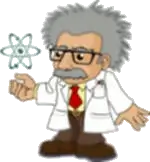Square root - math word problems - page 47 of 69
Number of problems found: 1372
- Square s3
 Calculate the square's diagonal, where its area is 0.49 cm square. And also calculate its circumference.
Calculate the square's diagonal, where its area is 0.49 cm square. And also calculate its circumference. - Glass
 How many glasses are needed to produce glass with a base of a regular 5-gon if one base triangle in the base is 4.2 square cm and the height is 10 cm?
How many glasses are needed to produce glass with a base of a regular 5-gon if one base triangle in the base is 4.2 square cm and the height is 10 cm? - Unknown 3922
 16% of the unknown number equals the square root of the number 25. Find this unknown number.
16% of the unknown number equals the square root of the number 25. Find this unknown number. - Complex roots
 Find the sum of the fourth square root of the number 16.
Find the sum of the fourth square root of the number 16. - Diagonal of the rectangle
 Calculate the rectangle's diagonal, whose area is 54 centimeters square, and the circuit equals 30 cm.
Calculate the rectangle's diagonal, whose area is 54 centimeters square, and the circuit equals 30 cm. - Circumference 3919
 Determine the diagonal of a square whose circumference is equal to 72 cm.
Determine the diagonal of a square whose circumference is equal to 72 cm. - Centimeters 3913
 Calculate the diagonal of a square whose area equals 625 square centimeters.
Calculate the diagonal of a square whose area equals 625 square centimeters. - Cube edge
 Determine the cube's edges when the surface is equal to 37.5 cm square.
Determine the cube's edges when the surface is equal to 37.5 cm square. - Third roots
 Determine the sum of the three complex third roots of the number 64 .
Determine the sum of the three complex third roots of the number 64 . - Determine 3885
 Determine the sum of the square roots of 81.
Determine the sum of the square roots of 81. - Equal 3883
 What is equal to twice the sixth root of 729?
What is equal to twice the sixth root of 729? - Complex square roots
 Determine the sum of the three square roots of 343.
Determine the sum of the three square roots of 343. - Determine 3873
 Determine the ratio of the square root of the number 27 and the square root of the number 16.
Determine the ratio of the square root of the number 27 and the square root of the number 16. - Fifth 3871
 What is the sum of the fifth root of 243?
What is the sum of the fifth root of 243? - Expression: 3865
 What is the value of this expression: (0.640.5): 4
What is the value of this expression: (0.640.5): 4 - Exponential 3858
 Determine m (solve the exponential equation - unknown in the exponent): 0.25 μm = 0.5
Determine m (solve the exponential equation - unknown in the exponent): 0.25 μm = 0.5 - Four-thirds 3852
 Anton said: I have a natural number x. I'll get three times as much if I increase it to four-thirds. What number did Anton mean?
Anton said: I have a natural number x. I'll get three times as much if I increase it to four-thirds. What number did Anton mean? - Natural 3838
 Find a natural number whose square root is 27 times its square root.
Find a natural number whose square root is 27 times its square root. - Volume and area
 What is a cube's volume with an area of 361 cm²?
What is a cube's volume with an area of 361 cm²? - Determine 3821
 Determine y: 32^y = 2
Determine y: 32^y = 2
Do you have unsolved math question and you need help? Ask a question, and we will try to solve it. We solve math question.
